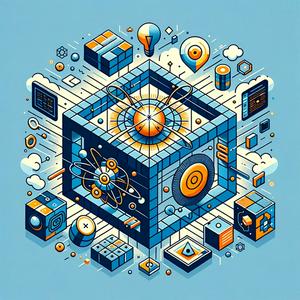Quantum Fusion: Hybrid Computing Shatters Benchmarks | Quantum Computing 101 with Leo
This is your Quantum Computing 101 podcast.Welcome back to Quantum Computing 101. I’m Leo—the Learning Enhanced Operator, here to unravel the most electrifying developments in quantum computing. If you’re tuning in today, you couldn’t have picked a better moment: just days ago, the line dividing quantum and classical computing blurred in a way the field has never seen.Picture this: the hum of supercooled refrigerators mingling with the clicks and whirs of classical servers, all inside a lab that pulses more like the command deck of a starship than a computer room. That’s where the magic happened—at the confluence of quantum and classical, a hybrid solution that’s ignited excitement across the globe.Last week, researchers at Quantinuum, in partnership with JPMorganChase’s global tech research team, pulled off a feat that embodies the quantum-classical hybrid dream. Using their fresh-from-the-lab System Model H2, a quantum computer packing 56 trapped-ion qubits, they tackled Random Circuit Sampling—RCS for short. Normally, this is a quantum task designed to prove superiority over classical computers, but here’s the twist: this team fused quantum power with the brute-force reliability of Oak Ridge, Argonne, and Berkeley National Labs’ classical supercomputers. That fusion didn’t just move the needle; it improved industry benchmarks a hundredfold.Why is this so dramatic? Because hybrid quantum-classical solutions aren’t just about splitting workloads. They’re about orchestrating a symphony: quantum processors generate states too complex for any classical machine, while classical algorithms verify, optimize, and steer the computation. In this experiment, classical computing supplied the vast memory and number-crunching muscle to guide the quantum machine, whose inherent randomness—certified by Scott Aaronson’s protocols—produced results truly impossible to simulate classically.As Dr. Rajeeb Hazra, Quantinuum’s CEO, said, “We celebrate a pivotal milestone bringing quantum computing into the realm of real-world applications.” I can almost feel the air buzz when I read these words—these aren’t just milestones, they’re tectonic shifts. The security implications, for one, are profound: certified quantum randomness unlocks new heights of cryptography, simulation, and industrial applications.But let’s pause for a moment, step inside the experiment. Imagine watching ions, suspended in electromagnetic traps, manipulated by lasers flickering at clockwork precision. Each flicker nudges the ions into quantum states—superposition, entanglement, those beautiful, slippery phenomena that let quantum computers see a thousand realities at once. The classical computer, meanwhile, is like a vigilant conductor, analyzing outputs, checking for errors, tuning parameters. This hybrid system is not a relay race, but a dance—each partner indispensable, each move more precise because of the other.It reminds me of current events beyond the lab. You know how cities today mesh renewable energy with legacy grids? Hybrids are everywhere: wind powered by old turbines, solar woven into decades-old infrastructure. Quantum-classical hybrids are doing the same for computation—splicing together cutting-edge innovation with battle-tested reliability, creating a platform that’s flexible, scalable, and, perhaps most importantly, ready for the world outside the laboratory.Of course, the story wouldn’t be complete without the names shaping this revolution. Researchers like Dr. Rajeeb Hazra at Quantinuum, Travis Humble at Oak Ridge, and theorists like Scott Aaronson have all contributed to this hybrid leap. Their work is the reason we’re seeing certified quantum randomness, robust quantum security, and quantum advantage—terms that, just a few years ago, were more dream than reality.Now, as we close today’s episode, I urge you to look at your own world through a quantum lens. Just as quantum states can be simultaneously one thing and another, our technologies—and our lives—are evolving beyond rigid categories. The boundary between classical and quantum is dissolving, and with it, so are old limits.Thank you for joining me, Leo, on this journey through the frontier of hybrid quantum-classical computing. If you have questions or want a topic discussed on air, email me at
[email protected]. Don’t forget to subscribe to Quantum Computing 101, and remember, this has been a Quiet Please Production. For more, visit quietplease.ai. Until next time, keep questioning—because in quantum, the more you ask, the more astonishing the answers become.For more http://www.quietplease.aiGet the best deals https://amzn.to/3ODvOta
